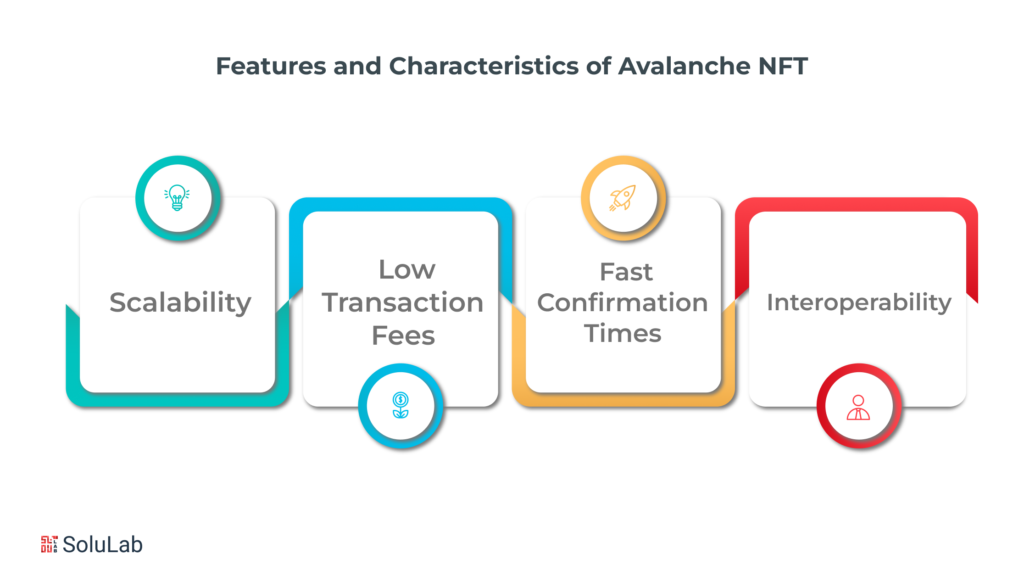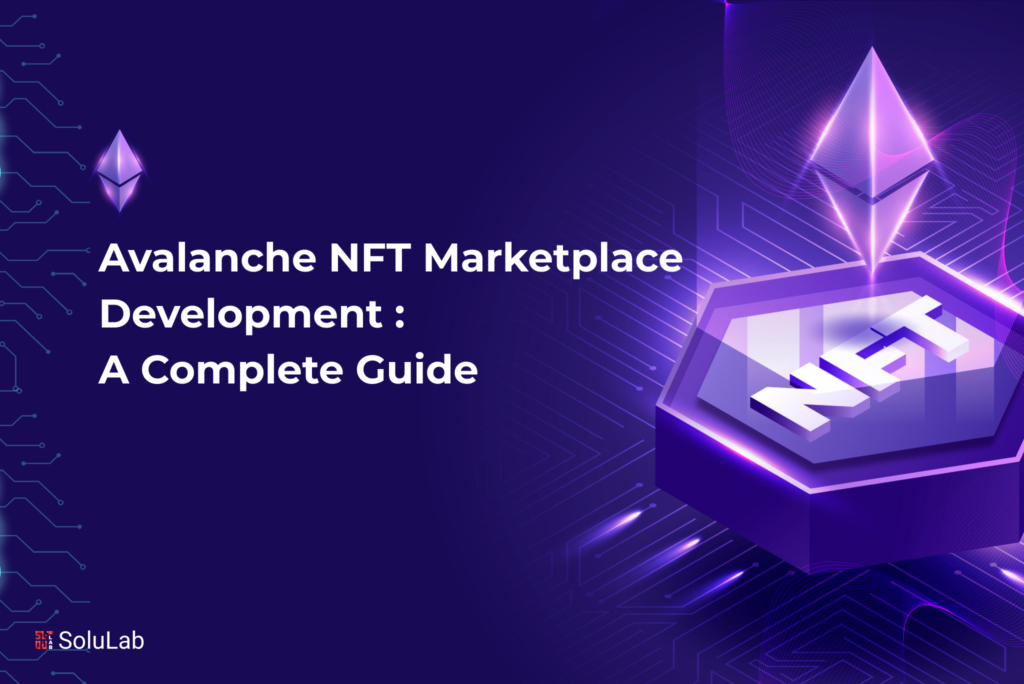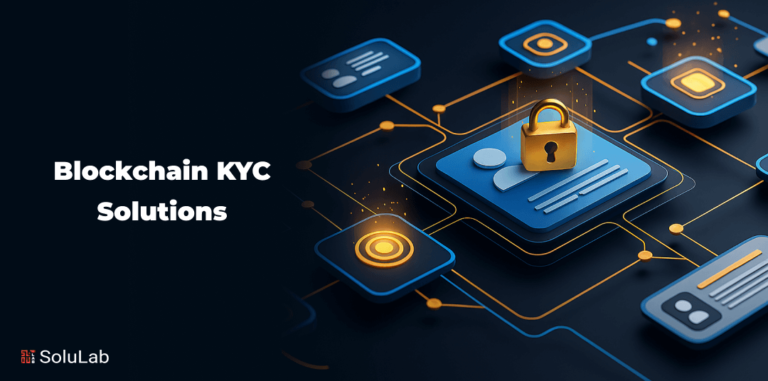As NFTs gather momentum, selecting the right blockchain platforms that are essential to creating a thriving NFT market. With its scalability, low transaction costs, quick confirmation times, and interoperability, Avalanche stands out as a strong alternative. Developers can build NFT marketplaces that offer an easy-to-use, affordable, and secure experience for artists, collectors, and traders by utilizing Avalanche’s special features and advantages. Make use of Avalanche’s capabilities and start creating your own Avalanche NFT marketplace with endless potential.
In this blog, we will explore this realm of avalanche nft.
Understanding Avalanche NFT Marketplace:
An NFT marketplace serves as a platform where creators and collectors can trade digital assets with unique ownership rights. Avalanche, a high-performance blockchain platform, provides an ideal foundation for NFT marketplaces due to its scalability, low transaction fees, and fast transaction confirmation times. Its purpose in the marketplace is to facilitate a seamless and efficient environment for artists, collectors, and traders to engage in the buying, selling, and bidding of NFTs.
Read Also: BSC NFT Marketplace Development: Everything you Need to Know
Key Features and Characteristics of Avalanche NFT:

-
Scalability:
Avalanche is known for its high throughput, enabling it to process thousands of transactions per second. This scalability ensures that NFT marketplaces built on Avalanche can handle heavy traffic loads and provide a smooth user experience even during peak periods.
-
Low Transaction Fees:
Avalanche’s unique consensus mechanism, known as Avalanche consensus, significantly reduces transaction costs compared to other blockchain networks. This cost-effectiveness is crucial for NFT marketplaces as it allows artists and collectors to trade assets without being burdened by exorbitant fees.
-
Fast Confirmation Times:
Avalanche boasts sub-second transaction confirmation times, ensuring near-instantaneous settlements for NFT transactions. This feature enhances the overall user experience by minimizing the waiting time for buyers and sellers.
-
Interoperability:
Avalanche supports the Ethereum Virtual Machine (EVM), making it compatible with existing Ethereum-based NFT contracts and tools. This interoperability enables easy migration of NFTs and expands the potential user base for Avalanche NFT marketplaces.
Benefits of Using Avalanche Blockchain for NFT Marketplaces

-
Cost Efficiency:
The low transaction fees on the Avalanche network enable NFT marketplaces to offer competitive pricing for NFT trades. Artists can list their creations without worrying about prohibitive costs, attracting a wider range of artists to participate.
-
Enhanced User Experience:
With fast transaction confirmation times, Avalanche ensures that users can swiftly browse, buy, and sell NFTs without delays. This seamless experience encourages increased user engagement and fosters a thriving marketplace environment.
-
Eco-Friendly Approach:
Avalanche implements a proof-of-stake (PoS) consensus mechanism, which consumes significantly less energy compared to proof-of-work (PoW) blockchains like Bitcoin. This eco-friendly approach aligns with the growing demand for sustainable and environmentally conscious practices within the NFT space.
-
Robust Security:
Avalanche prioritizes security, offering advanced features like Avalanche X-Chain and C-Chain for transaction validation and smart contract execution. These security measures protect user funds and ensure the integrity of the NFT marketplace.
Read More: How to Build an NFT Marketplace from Scratch
Setting up an Avalanche NFT Marketplace: Developing Core Functionalities

Once you have decided to build an NFT marketplace on the Avalanche blockchain, the next step is to set up the platform and develop its core functionalities. In this section, we will explore the key steps involved in setting up an Avalanche NFT marketplace and delve into the details of developing its core functionalities, ensuring a seamless and efficient user experience. It is important to note that this guide aims to provide valuable insights and suggestions, but the actual implementation may vary based on your specific requirements and development approach.
1. Choosing the Right Development Team or Platform:
Building an NFT marketplace requires expertise in blockchain development, smart contracts, and user interface design. You have two options: either assemble an experienced development team or utilize existing blockchain development platforms that support Avalanche. It is essential to assess their expertise, track record, and ability to meet your project’s requirements.
2. Understanding the Technical Requirements and Considerations:
Before diving into development, it is crucial to outline the technical requirements of your Avalanche NFT marketplace. Consider factors such as hosting, database management, and storage solutions. Additionally, determine whether you want to build a completely custom solution or utilize existing frameworks or protocols to expedite the development process.
3. Configuring Smart Contracts on the Avalanche Blockchain:
Smart contracts are the backbone of any NFT marketplace. They enable the creation, ownership, and transfer of NFTs. Using Solidity, the programming language of choice for Ethereum-based contracts, you can create smart contracts compatible with the Avalanche blockchain. Configure essential functionalities such as NFT creation, metadata storage, ownership transfer, royalties, and fees.
4. Designing the User Interface and User Experience:
A well-designed and intuitive user interface (UI) enhances user engagement and satisfaction. One needs to design a visually appealing UI that provides easy navigation, showcases NFTs effectively, and allows users to perform key actions such as browsing, buying, selling, and bidding seamlessly. Consider incorporating features such as filtering, sorting, and search functionalities to improve discoverability.
5. User Registration and Authentication:
It’s imperative to implement a user registration system to allow artists, collectors, and traders to create accounts and access the marketplace. You need to ensure secure authentication mechanisms, such as email verification and password hashing, to protect user data and prevent unauthorized access.
6. Wallet Integration and Token Management:
Integrating wallet services facilitates NFT transactions on the Avalanche blockchain. Users should be able to connect their wallets securely to the marketplace, view their NFT balances, and manage their assets effectively. Some of the most popular wallet integrations include Metamask and Avalanche Wallet.
7. NFT Listing and Creation:
One needs to provide an interface for artists to create and list their NFTs on the marketplace. This functionality should include uploading artwork files, setting attributes and metadata (title, description, royalties, etc.), and defining pricing and sale terms. Make sure that the NFT creation process adheres to the standards and guidelines established by the Avalanche blockchain.
8. Buying, Selling, and Bidding on NFTs:
Implement features such as one-click purchasing, auction functionalities, and instant transaction processing. This enable users to buy, sell, and bid on NFTs seamlessly. Escrow services can be integrated to ensure secure transactions and protect both buyers and sellers.
9. Transaction Processing and Escrow Services:
Develop a robust transaction processing system that facilitates smooth and secure NFT transfers. Integrate an escrow mechanism to hold funds during the transaction until both parties confirm the completion, reducing the risk of fraud or disputes.
10. Implementing Royalty and Secondary Sales Fees:
Support royalty mechanisms to ensure that artists receive a portion of the proceeds whenever their NFTs are resold on the marketplace. Implement smart contracts that automatically distribute royalties to the original creators as per the defined terms and percentages.
Developing an Avalanche NFT marketplace is a complex endeavor, requiring careful consideration of technical requirements, smart contract configuration, user interface design, and core functionalities. By following these steps and working with experienced developers or utilizing reliable development platforms, you can create a feature-rich marketplace that offers artists, collectors, and traders a seamless and secure environment to explore, buy, and sell NFTs on the Avalanche blockchain.
Read Our Blog: Solana NFT Marketplace: How to build your own NFT Marketplace on Solana
Marketing and Community Building:
Building a successful Avalanche NFT marketplace goes beyond technical implementation. It is equally important to focus on marketing and community-building efforts to attract artists, collectors, and traders. Consider the following:
-
Promoting the Avalanche NFT Marketplace:
Develop a comprehensive marketing strategy to raise awareness about your marketplace. Leverage social media platforms, content marketing, influencer collaborations, and targeted advertising to reach your target audience. Highlight the unique features of Avalanche, such as low fees, fast transactions, and interoperability, to attract users.
-
Engaging with the NFT Community and Influencers:
Actively participate in NFT communities and engage with artists, collectors, and influencers. Join relevant forums, Discord groups, and social media channels to foster connections, gather feedback, and build a strong community around your marketplace. Collaborate with influential figures in the NFT space to gain exposure and credibility.
-
Implementing Social Features and User Engagement Strategies:
Enhance user engagement by incorporating social features within the marketplace. Enable users to follow and interact with their favorite artists, create collections, and participate in discussions. Implement gamification elements, rewards, and incentives to encourage user activity and foster a sense of community.
Check Out Our Latest Press Release: SoluLab Bridging the Gap Between Technology And Innovation
Future Directions for Avalanche NFT:

The future of Avalanche crypto NFT holds exciting possibilities. Here are some potential directions:
Enhanced Interoperability:
As Avalanche continues to expand its ecosystem, we can anticipate further improvements in cross-chain interoperability. This would allow seamless movement of NFTs between different blockchain networks, unlocking new opportunities for artists, collectors, and traders.
Integration with Decentralized Finance (DeFi):
The integration of NFTs with DeFi protocols can introduce novel financial mechanisms such as lending, borrowing, and fractional ownership of NFTs. This could provide liquidity to NFT owners and create new avenues for investment and trading within Avalanche NFT marketplaces.
Advanced Metadata Standards:
The development of advanced metadata standards can enhance the richness and interactivity of NFTs. This includes incorporating multimedia elements, interactive features, and dynamic content within NFTs, further pushing the boundaries of digital ownership and artistic expression.
Concluding Remarks
Building an Avalanche NFT marketplace requires careful attention to security, scalability, and marketing. By implementing robust security measures, ensuring scalability for increased user demand, and executing effective marketing strategies, you can create a thriving marketplace that attracts artists, collectors, and traders. Looking ahead, Avalanche NFT marketplaces are poised for exciting advancements in interoperability, integration with DeFi, and the evolution of metadata standards. Embrace these opportunities and shape the future of digital ownership and creative expression on the Avalanche blockchain.
SoluLab excels as a leading player in Avalanche NFT Marketplace Development, offering a comprehensive suite of tailored services to empower businesses in the realm of non-fungible tokens on the Avalanche blockchain. With a team of experienced professionals specializing in Avalanche technology, smart contracts, design, and project management, SoluLab delivers secure and scalable Avalanche NFT solutions. Setting itself apart with intuitive interfaces, groundbreaking features, and vibrant community engagement, SoluLab is the trusted partner for unlocking growth opportunities and harnessing the full potential of Avalanche blockchain for NFT marketplaces.
FAQs
1. What is Avalanche NFT?
Avalanche NFT refers to non-fungible tokens built and transacted on the Avalanche blockchain. NFTs are unique digital assets that represent ownership or proof of authenticity for a wide range of digital or tangible items, including artwork, collectibles, virtual real estate, and more.
2. Why choose Avalanche for NFTs?
Avalanche offers several benefits for NFTs, making it an attractive choice for creators, collectors, and traders. These benefits include high scalability to handle a large volume of transactions, low transaction fees compared to other blockchain networks, fast transaction confirmation times, and compatibility with Ethereum Virtual Machine (EVM), enabling interoperability with existing Ethereum-based NFT contracts and tools.
3. How secure are Avalanche NFTs?
Avalanche blockchain prioritizes security and implements robust measures to protect user data and assets. Smart contracts on Avalanche undergo rigorous testing and auditing to identify and mitigate vulnerabilities. Additionally, users can leverage secure wallet integrations like Metamask and Avalanche Wallet to safeguard their NFT holdings.
4. How can I market my Avalanche NFTs?
Marketing Avalanche NFTs requires a strategic approach. Engage with the NFT community by participating in forums, Discord groups, and social media channels. Leverage content marketing, collaborate with influencers, and use targeted advertising to raise awareness about your NFTs and the unique features of the Avalanche blockchain, such as low fees and fast transactions. Building a strong community around your NFTs and implementing social features within the marketplace can also help drive user engagement and attract potential buyers.







